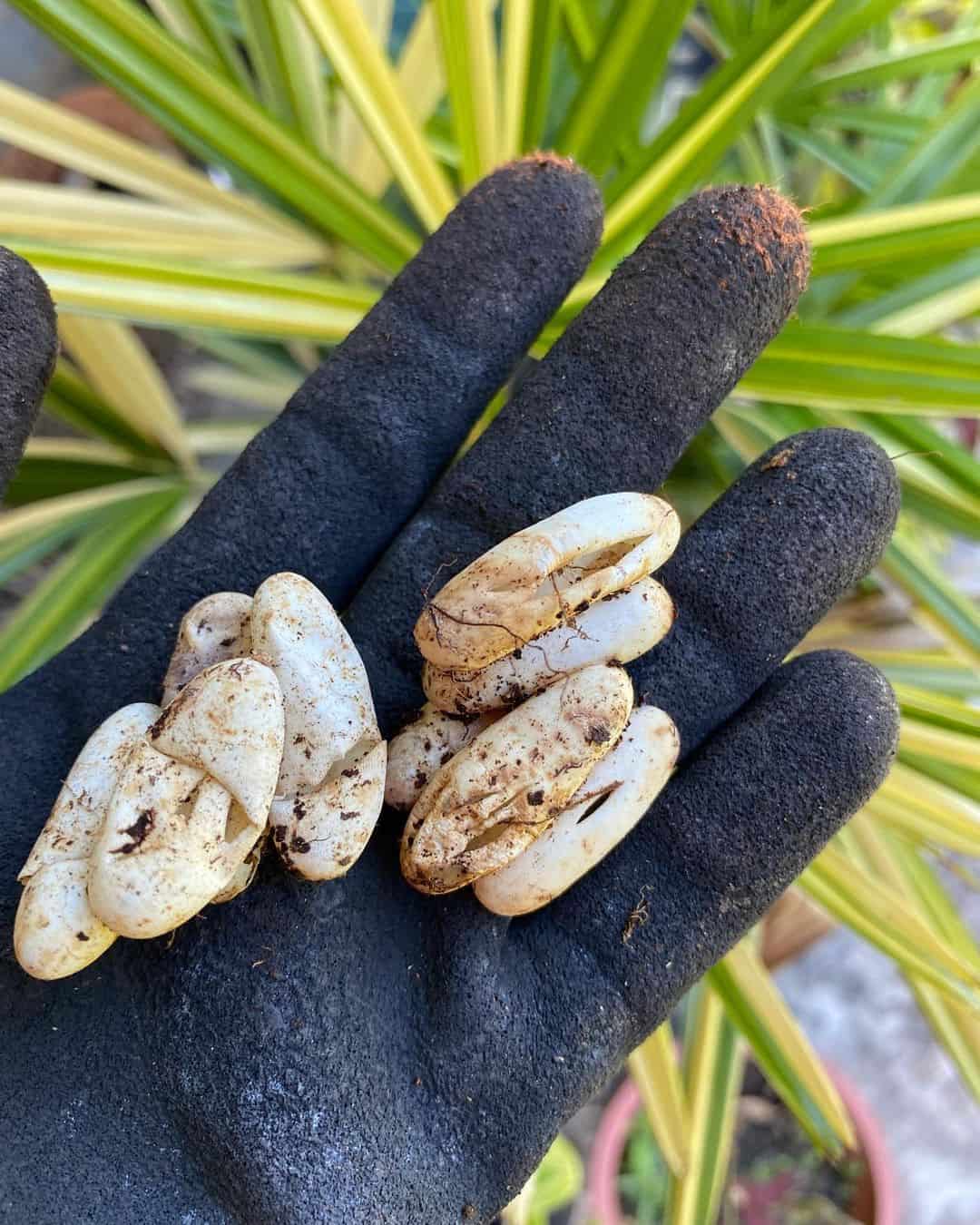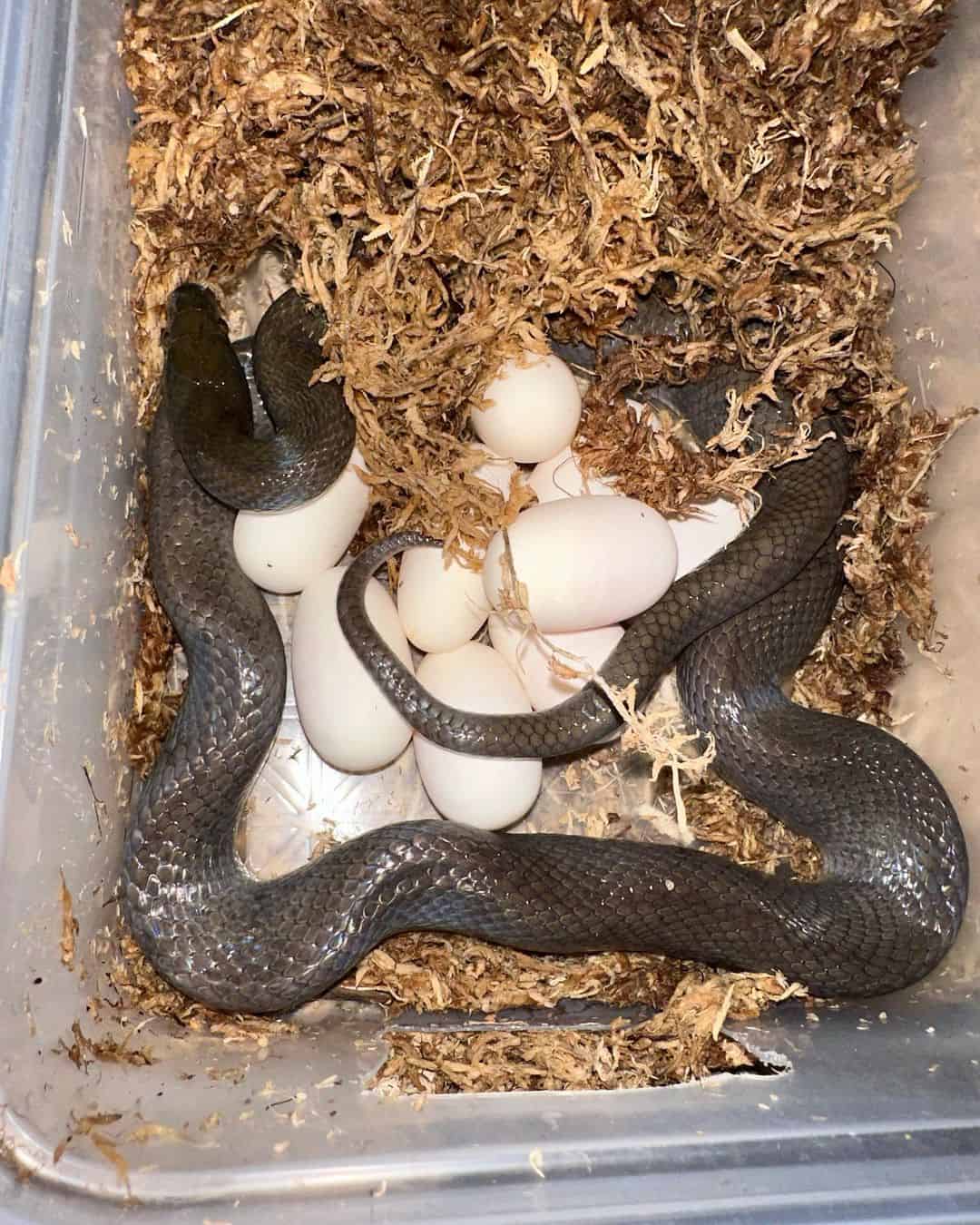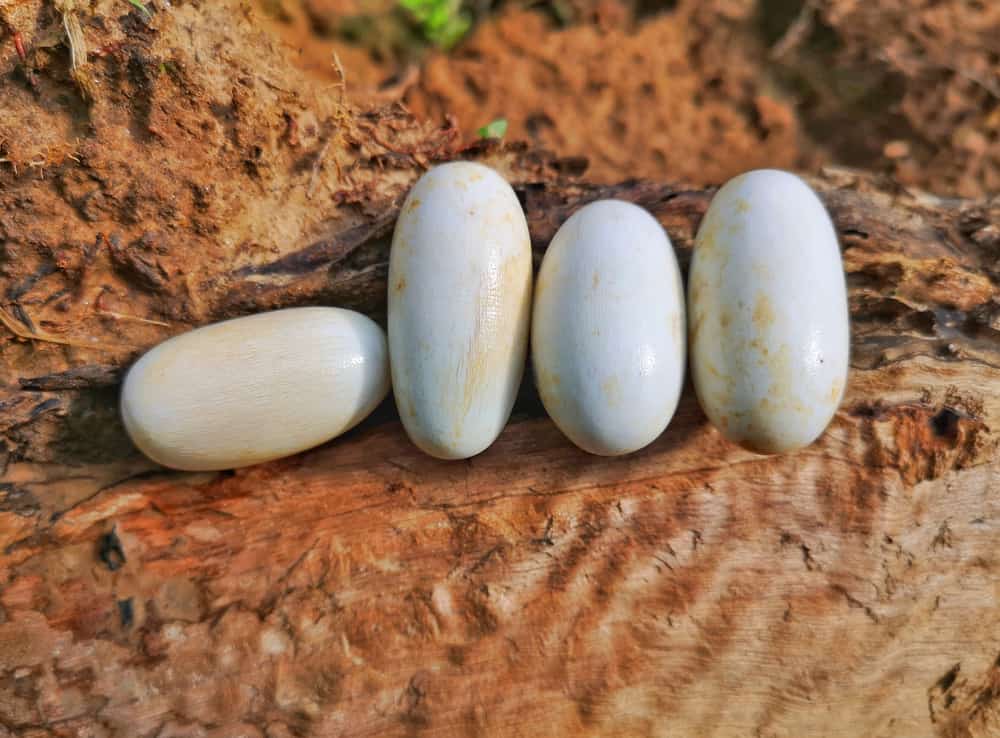Snake eggs can be difficult to identify at first glance due to their resemblance to other kinds of eggs. However, we’ve put together this guide to help clarify and help you recognize these eggs right away.
If you’re a snake enthusiast, this article should do justice to your curiosity and add to your knowledge of eggs of various snake species and how to differentiate them from other reptiles’ eggs.
And if you’re not particularly fond of snakes, we’ll help you familiarize yourself with their eggs. That way, you can tell if the next egg you come across in your backyard is from a venomous snake, and you can keep those unwanted visitors away from your property.
But before we dive in, do all snakes really lay eggs?
Do All Snakes Lay Eggs?
We often get asked the question, and the straight answer is NO. While the majority (about 70%) of snakes do lay eggs, it’s fascinating that there are a few species that give birth to their young ones live.
Based on this varying reproductive system, snakes are often classified into three groups.
- Oviparous: Oviparous snakes lay eggs to complete the gestation period. About 70% of snakes, including cobras and adders, belong to this category.
- Ovoviviparous: These snakes retain their eggs inside their bodies until they are ready to hatch. This is particularly common in rattlesnakes.
- Viviparous: Snakes that are viviparous don’t need to rely on eggs in the reproduction process. Their babies form and develop in the placenta and yolk sac, which is very uncommon and gives them the ability to birth live young. Examples of viviparous snakes include boa constrictors and anacondas.
Now that we’ve cleared this up let’s look at what snake eggs look like and how they differ from other kinds of eggs.
How to Identify A Snake Egg
Snakes lay eggs in various shapes, sizes, and colors, which can be difficult to identify without some knowledge of the species. However, we’ll go over some general characteristics that will help you identify them.
1. Shell Color
Snake eggs can range from white and cream to pink and pale yellow, with some species laying eggs that are speckled or have a mottled pattern. This color can provide important clues about the species and the habitat.
For example, a snake living and reproducing in areas with a lot of plant matter will likely have eggs with spots, stripes, or blotches of various colors. This is because the plant matter often stains and acts as a natural dye on the surrounding eggs.
However, if you notice off colors like blue, dark yellow, and brown, it results from a dead embryo. This is because the snake egg has been infected and rotting. If you’re a breeder, you should get rid of such eggs to avoid infecting other eggs.

2. Texture
Most snake eggs are leathery and quite tough, and the eggs have a distinctive ridged pattern on the outside. The leathery texture gives the eggs the flexibility needed to accommodate the growing embryo and protect them from being easily crushed.
Many species immediately abandon the eggs after laying them, so this texture is a natural selection that provides insulation to keep the eggs at a constant temperature.
Precaution: While trying to identify a snake egg through how it feels in your hands, ensure there is no sign of the mother snake nearby and gently handle the eggs to avoid damaging the embryo. Also, remember to place the egg back in the exact position you picked it from.
3. Egg Size
It gets a bit confusing here because the size of snakes can vary greatly, depending on the species. However, you’d usually find them between one to five inches long.
For example, Eggs less than 2 inches are common among smaller species. Such as corn snake, while larger species like boa constrictors and Burmese pythons can lay eggs as big as 4-5 inches
4. Shape
Snake eggs have an elongated and oblong shape perfectly adapted to a developing snake’s needs. Unlike bid eggs, which have a tapered point at one end, Snake eggs have a uniform width and rounded ends on both sides.
With this oblong shape, there is enough room for the embryo to grow and develop, and it also provides the right amount of air and moisture.

5. Location
You’d typically find snake eggs in areas that provide protection and incubation. Unlike birds, most snakes do not incubate their eggs themselves. So, you’d rarely find them building nests in trees like a birdhouse. Instead, they lay their eggs in damp and dark places like rotting logs, burying them in the ground or hiding them under rocks.
It all varies depending on the species of the snake. For example, a Corn snake would lay its eggs in rotting stumps, piles of decaying vegetation, or something similar.
While the cobras carefully tuck leaves and branches into a cozy nest to keep the eggs warm, allowing the heat of decomposition to incubate them. On the other hand, pythons would lay eggs in a shallow nest or even cover them with leaves and soil.
How to Professionally Identify Snake Eggs (The Candling Technique)
Identifying the exact specie of a snake egg is almost impossible by just looking at its physical characteristics, even as a pro. So, many herpetologists and reptile breeders opt for the candling technique.
This technique is incredibly useful for identifying the exact species of a snake egg. its embryo’s health, size, and age. Though the process can take some time, it is invaluable to breeders for helping to produce healthy and successful snake hatchlings.
So how does the candling work?
- You’ll need a bright light source, such as a flashlight or a special candling light, a dark room or a box to place the egg in, and gloves to protect your hands.
- Make sure the egg is clean and free of any dirt or debris. You can use a soft cloth to clean it if needed gently.
- Transfer the egg to a dark room and hold your flashlight against one end of the egg and move it around the egg to observe the contents. Handle the egg carefully, and don’t turn around. Rough handling can damage the developing embryo.
- With light shining through the egg, you should be able to map out some features that will help you identify what species the egg belongs to. as well as additional information like the fertility and possible abnormalities of the eggs.
- Record your observation, as this information can be useful for future reference and to keep track of the development of the eggs.

What Should You do if you See Snake Eggs?
If you come across snake eggs, you should handle them carefully and respect the species. The best course of action depends on your specific location and circumstances of the eggs, but here are general guidelines that we recommend:
- Leave the eggs where they are if they are in the wild: Snakes lay their eggs in specific places for a reason, and moving them can harm the developing embryos or disrupt the ecosystem.
- Observe from a distance. Snakes are highly protective of their eggs. So, keep your distance to avoid provoking the mother snake.
- Document and report: If you find snake eggs in an unexpected location or in a threatened or endangered species, it is important to document the location and report the find to a local conservation agency or reptile expert who can ensure the eggs are protected and properly monitored.
- If you have eggs on your property and aren’t sure what kind they are, and if you’re not feeling comfortable with them there, it’s best to get in touch with a local wildlife specialist or reptile rescue group. They can provide advice on the best course of action.
Conclusion
Although snake eggs may look different depending on the species, they all have the same basic features. Healthy eggs are usually laid in clutches, have soft leathery shells, and are usually white or off-white.
If you ever find snake eggs on your property or in nature, it’s important to know what they look like so that you can either help them hatch safely or move them somewhere safer.
Here are a few key takeaways.
- Use multiple characteristics, such as size, shape, color, texture, and location of the egg, to differentiate snake eggs from other reptile or bird eggs.
- Consider where you found the eggs and compare them to the typical habitats of different snake species. This should help you identify what snake species the egg belongs to.
- The candling technique is the most accurate way to identify a snake egg and its specie.
- Remember that it’s illegal to collect snake eggs without proper permits in most places, so it’s best to leave any eggs you come across in the wild undisturbed.
If you have any questions or are unsure about what a snake egg looks like, please leave a comment below, and we’ll be happy to assist you.
